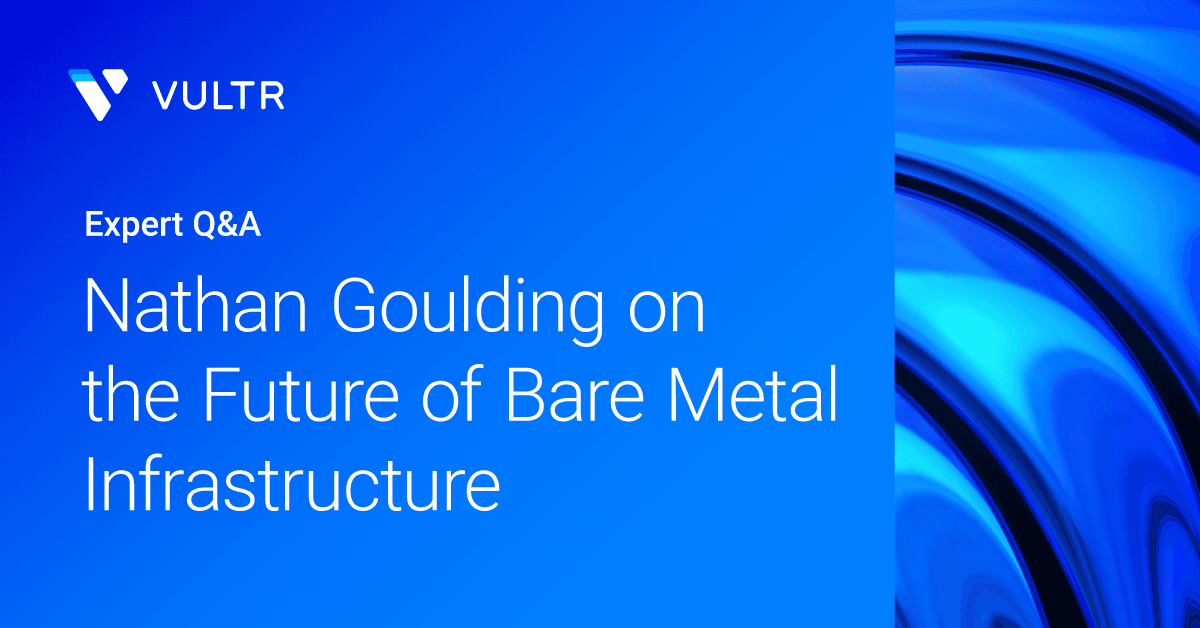We recently caught up with Nathan Goulding, our SVP of Engineering, to discuss the recent market shifts in bare metal infrastructure and how enterprise teams can navigate them. We dig deeper into Equinix's recent decision to sunset its bare metal offering, key considerations for building and scaling bare metal as IaaS, and how Vultr has evolved our bare metal offerings for enterprises around the globe.
Vultr's approach to modern bare metal
What makes Vultr's bare metal offering unique in the market?
Nathan: Vultr Bare Metal excels in running resource-intensive applications, including AI training and inference, scientific research and simulation, and real-time analytics by offering dedicated physical resources. Our high-performance computing infrastructure provides dedicated physical servers with unrivaled access to potent hardware configurations, including the latest enterprise-grade CPUs from AMD and Intel and top-tier GPUs from AMD and NVIDIA.
Our global reach across 32 data center regions on six continents, combined with our cloud-native capabilities, truly sets us apart. Our Vultr Marketplace provides users with plug-and-play applications to simplify cloud application development and deployment, while our strategic partnerships through the Vultr Cloud Alliance empower customers to build scalable, enterprise-grade solutions without high costs, complexity, or lock-in.
How is Vultr supporting customer transitions in light of market changes?
Nathan: We're committed to making the transition easy and seamless. As the infrastructure landscape continues to evolve, Vultr remains committed to providing enterprise-grade bare metal solutions that combine performance, flexibility, and global reach with the simplicity of cloud. Our goal is 100% customer satisfaction and success.
The complex reality of building global IaaS
Having architected the Equinix Metal offering, what are the key global challenges in scaling IaaS services?
Nathan: Building and scaling IaaS is incredibly complex, even for sophisticated operators. Beyond the technical hurdles, providers must navigate a web of financial, supply chain, logistics, legal, tax, compliance, and security considerations. The real differentiator lies in building a software platform that makes cloud infrastructure feel effortless – combining an intuitive portal with robust APIs and SDKs. This is no small feat, separating the true innovators from the rest of the field.
How have you applied these lessons at Vultr?
Nathan: This journey started for me 23 years ago when I first began putting servers in data centers, and Vultr is the fourth infrastructure provider I've worked for. The biggest takeaway is that you must focus on building and investing in your automation and platform, no matter your industry. It's the single biggest competitive differentiator as a cloud provider.
What's your perspective on Equinix's recent exit from the bare metal market?
Nathan: This move reflects Equinix's strategic focus on its core strengths. With the unprecedented demand for data center space globally, driven by GenAI, Equinix is doubling down on its billion-dollar opportunities in colocation, interconnection, and hyperscale offerings. The needs of bare metal customers are fundamentally different from those of hyperscaler or colocation buyers. Equinix is making a calculated decision to focus its energy on delivering in its areas of greatest strength.
Learn more
For platform engineers and enterprises looking to explore Vultr's bare metal solutions:
- Visit our Vultr Bare Metal documentation
- Explore our AI & ML solutions
- Contact our sales team for custom configurations

